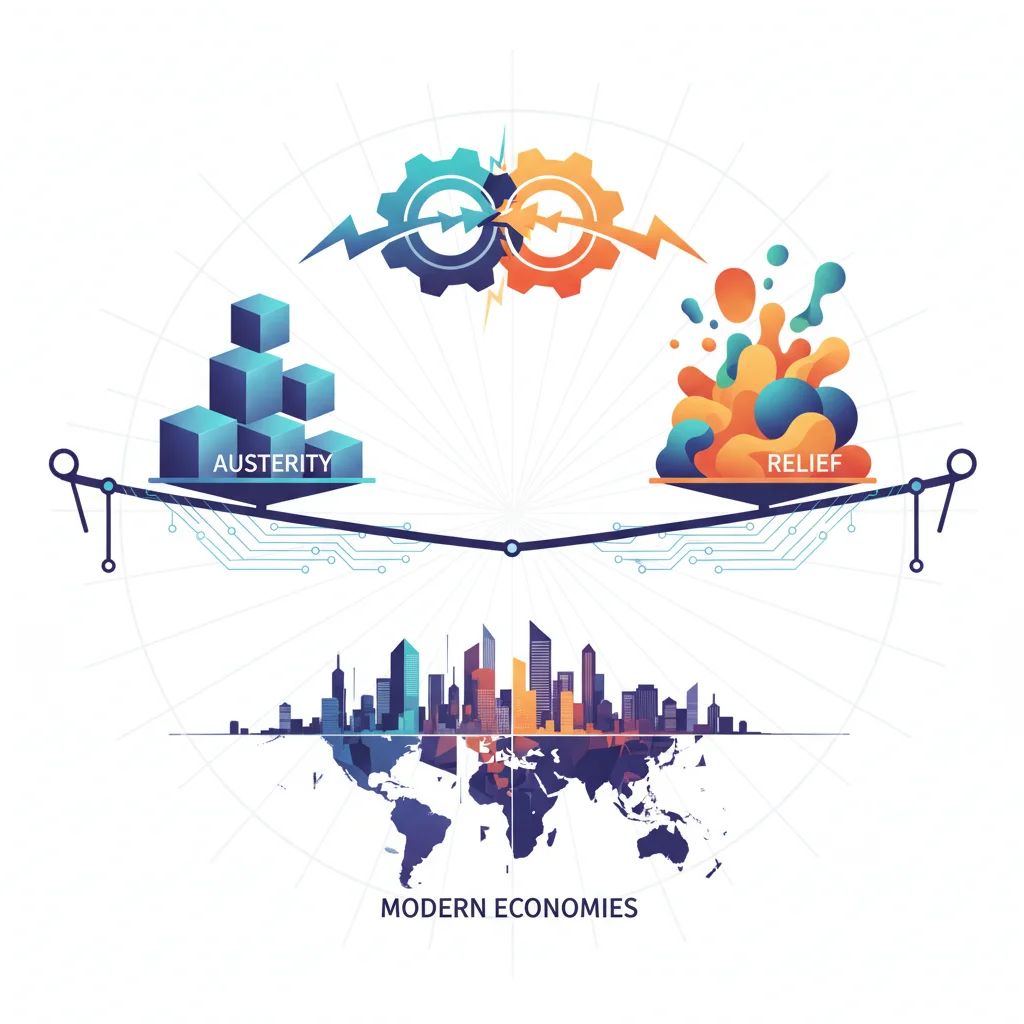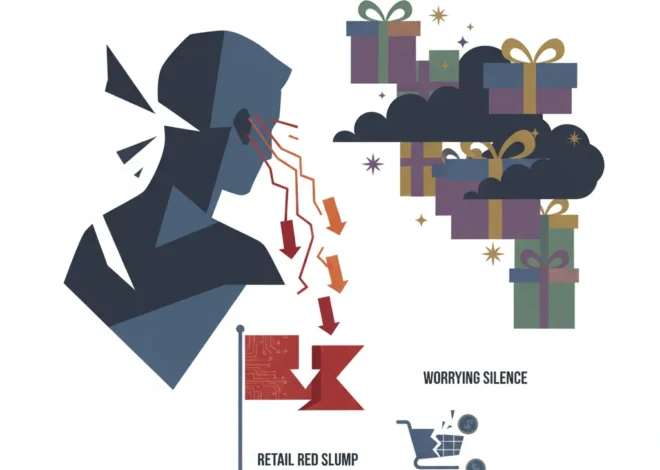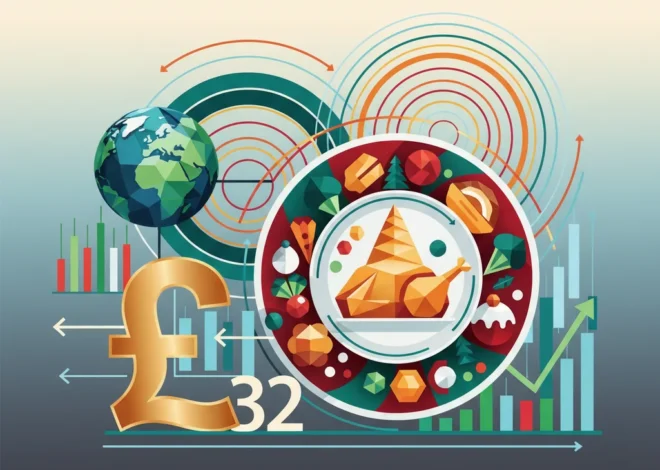
Fiscal Tightrope: Deconstructing the Battle Between Austerity and Relief in Modern Economies
In the intricate world of public finance, governments constantly walk a fine line between fiscal responsibility and public welfare. This delicate balancing act was recently highlighted in a seemingly local political maneuver. A government’s Policy & Resources (P&R) committee announced its intention to oppose proposed budget amendments, including a public spending freeze and a reduction in a planned fuel duty hike (source). While this specific event may be geographically contained, the principles at its core represent a fundamental dilemma facing finance ministers, investors, and business leaders across the globe. It’s the classic economic tug-of-war: the push for austerity versus the pull of economic relief.
This single decision point is a microcosm of the larger challenges defining our current economic landscape. How do governments curb spending to ensure long-term stability without stifling growth or harming citizens in the short term? How do they provide relief to households and businesses grappling with inflation without fanning the flames of that same inflation? Understanding the dynamics of this debate is crucial for anyone involved in finance, investing, or strategic business planning. The ripples from these decisions extend far beyond government budgets, directly influencing the stock market, banking sector stability, and the overall investment climate.
The Anatomy of a Budgetary Showdown: Austerity vs. Stimulus
To grasp the full implications, we must first dissect the two opposing measures at the heart of this and many similar debates: the spending freeze and the fuel duty reduction. They represent two vastly different philosophies of economic management.
The Case for the Spending Freeze: Fiscal Prudence
A spending freeze is a form of austerity. It’s a directive to halt increases in government expenditure, and in some cases, to cut spending across various departments. The primary arguments in its favor are rooted in fiscal discipline:
- Debt Reduction: For governments running a deficit, freezing spending is a direct way to slow the accumulation of national debt. High levels of debt can lead to higher borrowing costs and crowd out private investment.
- Inflation Control: By reducing the amount of money the government injects into the economy, a spending freeze can have a deflationary effect, helping to cool an overheated economy and bring inflation under control.
- Investor Confidence: A commitment to fiscal prudence can signal to international investors and bond markets that a government is stable and responsible. This can strengthen the national currency and lower the yields on government bonds, making future borrowing cheaper.
However, the medicine can have harsh side effects. A freeze can mean a degradation of public services, a halt to crucial infrastructure projects, and a significant blow to businesses that rely on government contracts. According to a report by the International Monetary Fund (IMF), while fiscal consolidation is often necessary, its short-term impact can include a contraction in economic output (source). This makes it a politically difficult and often unpopular choice.
The Case for Tax Relief: Fueling the Economy
On the other side of the aisle is the proposal to reduce a hike in fuel duty. Fuel costs are a direct and visible expense for a vast majority of the population and nearly every business. Reducing this tax burden is a form of targeted economic stimulus.
- Consumer Relief: Lower fuel prices leave more disposable income in consumers’ pockets, which can boost spending in other areas of the economy, such as retail and services.
- Business Cost Reduction: For industries like logistics, transportation, and manufacturing, fuel is a major operational expense. Lowering this cost can improve profit margins, prevent price hikes on goods, and encourage business investment.
- Inflationary Pressure Mitigation: Since transportation costs are a component of the price of almost all goods, controlling fuel duty can help mitigate one of the key drivers of inflation, at least from a supply-chain perspective.
The downside? A reduction in fuel duty directly cuts government revenue, potentially worsening the budget deficit and increasing the need for borrowing. Critics also argue that it can be an inefficient form of stimulus and may work against environmental goals by encouraging fossil fuel consumption. Studies have shown that the benefits of fuel tax cuts are not always passed on entirely to consumers, with some of the savings being absorbed by retailers (source).
Below is a comparative analysis of the potential impacts of these two opposing fiscal strategies.
| Stakeholder / Metric | Impact of a Spending Freeze (Austerity) | Impact of a Fuel Duty Reduction (Relief) |
|---|---|---|
| Government Finances | Improves budget balance, slows debt accumulation. | Reduces tax revenue, potentially increases deficit. |
| General Economy | May slow short-term GDP growth; helps control inflation. | Can stimulate consumer spending and short-term growth. |
| Stock Market | Mixed. Positive for investor confidence in government stability, but negative for companies reliant on public contracts. | Positive for consumer discretionary, logistics, and transportation sectors. May signal inflationary risk to bond markets. |
| Businesses | Negative for government contractors. Positive for businesses sensitive to interest rates if it leads to lower rates. | Positive for businesses with high transportation costs, potentially boosting profit margins. |
| Consumers | Potential reduction in quality/availability of public services. | Immediate increase in disposable income due to lower fuel costs. |
The Salade Niçoise Strategy: Can a Classic Restaurant Revive London's Ailing IPO Market?
From Local Policy to Global Investment Strategy
For investors and finance professionals, these governmental debates are not academic. They are critical data points that inform trading strategies and investment theses. A government leaning towards austerity might signal a more stable, low-inflation environment, potentially benefiting bondholders and the banking sector. However, it could also spell trouble for growth stocks and sectors dependent on government spending, such as defense, infrastructure, and certain technology contractors.
Conversely, a government prioritizing stimulus and tax cuts creates a different set of opportunities and risks. This environment can be a boon for consumer-facing industries and transportation stocks. The increased liquidity can fuel the stock market in the short term. However, it also raises the specter of inflation and higher national debt, which can devalue the currency and lead to higher interest rates down the line, hurting the very economy it was meant to help. A savvy investor must analyze not just the policy itself, but the underlying health of the economy in which it is being implemented. A stimulus package in a robust economy looks very different from one in a fragile, high-debt nation.
The Future of Public Finance: A Role for Financial Technology?
As governments grapple with these age-old dilemmas, a new set of tools is emerging that could reshape the landscape of public finance. The rise of financial technology (fintech) and blockchain offers tantalizing possibilities for creating more efficient, transparent, and effective government.
Imagine a scenario where the debate isn’t just about cutting spending versus cutting taxes. What if technology could create a “third option” by radically improving the efficiency of the state?
- AI-Powered Budgeting: Advanced AI and machine learning algorithms could analyze vast datasets to identify inefficiencies in government spending with a precision impossible for human analysts. This could enable targeted cuts that have a minimal impact on public services while yielding significant savings.
– Digital Tax Collection: Fintech solutions can streamline tax collection, reducing administrative costs and closing the “tax gap”—the difference between taxes owed and taxes paid. This increases government revenue without raising tax rates.
– Blockchain for Transparency: This is perhaps the most revolutionary concept. A government could, in theory, run its spending on a distributed ledger. Every tax dollar collected and every cent spent could be recorded on an immutable blockchain, accessible to the public. According to a report from Deloitte, blockchain technology has the potential to reduce fraud and operational costs in the public sector significantly (source). This level of transparency could transform public trust, hold officials accountable, and provide investors with an unprecedentedly clear view of a country’s fiscal health.
This integration of `financial technology` into public administration is no longer science fiction. It represents a paradigm shift that could make the blunt instruments of broad spending freezes and tax cuts seem archaic. For the fintech industry, “GovTech” is a massive, emerging market. For investors, a government’s adoption of these technologies could become a key indicator of its long-term stability and efficiency.
Conclusion: Navigating the New Economic Reality
The decision by a single committee to oppose a spending freeze and a fuel duty cut serves as a powerful reminder of the complex forces shaping our economy. It’s a conflict between the immediate needs of the populace and the long-term imperatives of fiscal health. For those in finance, economics, and business, these are not distant political squabbles; they are the gears of the machine that drives markets and determines corporate success.
The key takeaway is that the old binaries are becoming insufficient. The future of sound economic management will not be about choosing austerity or stimulus, but about leveraging technology and data to make government more efficient, transparent, and responsive. As investors and business leaders, our analysis must evolve to account for these new variables. The governments and economies that successfully navigate this fiscal tightrope will be those that embrace innovation, not just in the private sector, but at the very heart of their own operations. The intersection of public policy, economics, and technology will be the most critical area to watch in the years to come.


